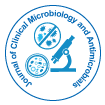

Short Communication - (2025)Volume 9, Issue 1
Antimicrobial resistance (AMR) has emerged as one of the greatest threats to global health, necessitating a comprehensive and integrated strategy for mitigation. The One Health approach recognizing the interconnectedness of human, animal, and environmental health has gained significant attention as a holistic framework to combat AMR. Originally conceptualized to address zoonotic diseases, One Health has now become a cornerstone in the global response to AMR [1]. The misuse and overuse of antibiotics across all sectors human medicine, veterinary care, and agriculture have accelerated the spread of resistant pathogens, compromising the efficacy of life-saving treatments [2]. Despite widespread recognition of the One Health model, practical implementation remains fragmented and inconsistent across regions, underscoring the need to revisit and reinforce this approach with greater urgency and cohesion.
In human medicine, antibiotics are frequently prescribed for viral infections, and often without definitive diagnoses [3]. In agriculture and animal husbandry, antimicrobials are used not only to treat disease but also for growth promotion and prophylaxis, particularly in intensive livestock systems [4]. These practices contribute to the development and transmission of resistant bacteria, which can reach humans through direct contact, consumption of contaminated food products, or environmental pathways such as water runoff and soil contamination [5]. The environment, long overlooked in AMR discussions, serves as both a reservoir and a conduit for resistance genes [6]. Antibiotic residues and resistant microbes from hospitals, pharmaceutical factories, and farms enter natural ecosystems, facilitating the horizontal gene transfer among microbial populations.
Italy, like many European nations, has made progress in reducing antimicrobial consumption in animals and improving surveillance systems. The National Action Plan on Antimicrobial Resistance (PNCAR) adopts a One Health lens, incorporating inter-ministerial collaboration and multi-sectoral initiatives [7]. However, challenges persist in harmonizing efforts among healthcare, agriculture, and environmental agencies. Data silos, inconsistent regulation enforcement, and limited public awareness impede the effectiveness of AMR mitigation [8]. There is also a disparity between policy formulation and on-the-ground application, especially in rural and resource-limited settings. Veterinarians, farmers, clinicians, and environmental regulators must be actively engaged and trained to adopt a One Health mindset in their daily practices.
A successful One Health strategy must begin with robust surveillance. Integrated data systems that track antimicrobial use and resistance patterns across sectors are essential for identifying hotspots and informing targeted interventions [9]. Italy’s ClassyFarm system, which monitors antibiotic usage on farms, serves as an example of how digital tools can enhance transparency and accountability. Expanding such tools to include environmental data and linking them with human health databases can provide a more complete picture of AMR dynamics. Additionally, standardized metrics and indicators are needed to evaluate progress and compare outcomes across different regions and sectors.
Another critical component is antimicrobial stewardship. Stewardship programs in hospitals and veterinary clinics must be aligned and informed by shared principles of prudent use. In human healthcare, this includes accurate diagnosis, appropriate antibiotic selection, and patient education. In veterinary practice, stewardship entails limiting prophylactic use, avoiding critical antimicrobials for animal growth, and promoting animal welfare and vaccination as preventive measures [10]. Public awareness campaigns should target all stakeholders, from consumers and pet owners to food producers and policymakers. Encouraging responsible antibiotic use through educational initiatives can reduce demand and support policy changes.
The One Health approach remains the most comprehensive and sustainable solution to tackle antimicrobial resistance. However, it must evolve from a theoretical framework into a fully operational model. This requires political will, institutional collaboration, and grassroots engagement. By investing in integrated surveillance, stewardship, research, and education, we can bridge the gaps between sectors and make meaningful progress against AMR. As antimicrobial resistance continues to threaten global health, food security, and environmental integrity, revisiting and reinvigorating the One Health approach is not just advisable it is imperative. Italy and other nations must lead by example, fostering cross-sector synergy to protect both current and future generations from the dire consequences of antimicrobial resistance.
Citation: Romano A (2025). Revisiting the One Health Approach to Tackle Antimicrobial Resistance. J Clin Microbiol Antimicrob.09:223.
Received: 03-Mar-2025, Manuscript No. JCMA-25-37634; Editor assigned: 04-Mar-2025, Pre QC No. JCMA-25-37634 (PQ); Reviewed: 18-Mar-2025, QC No. JCMA-25-37634; Revised: 25-Mar-2025, Manuscript No. JCMA-25-37634 (R); Published: 01-Apr-2025 , DOI: 10.35248/ JCMA.25.09.223
Copyright: © 2025 Romano A. This is an open-access article distributed under the terms of the Creative Commons Attribution License, which permits unrestricted use, distribution, and reproduction in any medium, provided the original author and source are credited.